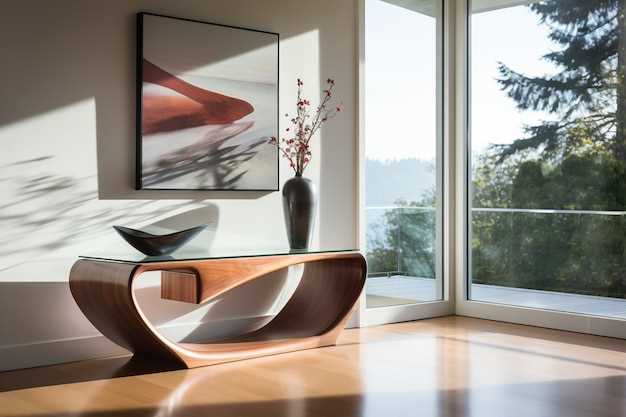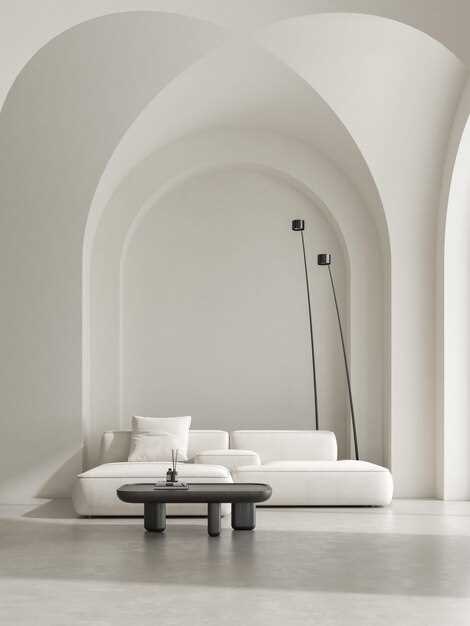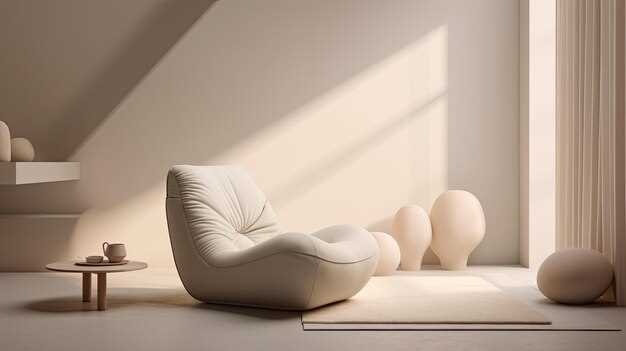
Step into a world where less is more, where simplicity reigns supreme, and where every element is carefully curated to create a space that exudes sophistication. Welcome to the realm of minimalist interior design, a style that embraces clean lines, neutral colors, and a focus on functionality.
In this article, we will explore the art of achieving a minimalist aesthetic in your home, without sacrificing style or comfort. We will delve into the principles that underpin this design philosophy, and discover how to create a serene and inviting atmosphere that is both visually stunning and highly functional.
Minimalism is not just about decluttering and getting rid of excess belongings; it is a mindset that embraces the idea of living with intention and purpose. By stripping away unnecessary elements and focusing on what truly matters, minimalist design allows you to create a space that is both visually appealing and conducive to a sense of calm and tranquility.
With its emphasis on clean lines and a neutral color palette, minimalist interior design offers a timeless elegance that can transform any space into a sanctuary of serenity. By using a limited color scheme, such as shades of white, gray, and beige, you can create a cohesive and harmonious look that is both soothing and visually pleasing.
So, whether you are looking to revamp your entire home or simply want to introduce a touch of minimalism into your existing decor, this article will guide you through the key principles and techniques of minimalist interior design. Get ready to embrace simplicity, sophistication, and a sense of calm as you embark on your minimalist design journey.
Embrace the Power of Minimalism
Incorporating the essence of minimalism into your living space can bring about a transformative experience. By embracing the power of simplicity and refinement, you can create an environment that exudes elegance and tranquility. This approach to interior design focuses on the art of omission, allowing each element to shine and make a statement. Let us explore the profound impact minimalism can have on your surroundings and how it can elevate your lifestyle.
The Beauty of Simplicity
Minimalism celebrates the beauty found in simplicity. It encourages the removal of excess clutter and unnecessary embellishments, leaving only the essential elements that truly matter. By stripping away the superfluous, a sense of calm and clarity is achieved, allowing you to fully appreciate the inherent beauty of each carefully chosen piece. The deliberate use of clean lines, neutral colors, and uncluttered spaces creates a harmonious atmosphere that promotes relaxation and mindfulness.
The Power of Intention
Minimalism is not just about aesthetics; it is a mindset that extends beyond the physical realm. It encourages intentional living and mindful consumption. By adopting a minimalist approach, you become more aware of your choices and the impact they have on your environment. This newfound consciousness allows you to prioritize quality over quantity, investing in pieces that are not only visually appealing but also durable and sustainable. By curating your space with intention, you create a sanctuary that reflects your values and enhances your overall well-being.
Embracing the power of minimalism is a transformative journey that goes beyond mere design choices. It is about creating a space that fosters simplicity, elegance, and mindfulness. By incorporating the principles of minimalism into your interior design, you can achieve a sense of harmony and balance that elevates your everyday life. So, why not embark on this journey and experience the profound impact minimalism can have on your living space and well-being?
Create a Calming and Serene Atmosphere
When it comes to designing your living space, one of the key goals is to create an environment that promotes relaxation and tranquility. By incorporating minimalist principles into your interior design, you can achieve a calming and serene atmosphere that will help you unwind and find peace amidst the chaos of everyday life.
Embrace Simplicity
Simplicity is at the core of minimalist design. By removing unnecessary clutter and focusing on essential elements, you can create a space that feels open, airy, and uncluttered. Opt for clean lines, minimalistic furniture, and neutral color palettes to achieve a sense of simplicity in your interior design.
Utilize Natural Elements
Bringing nature indoors is a great way to create a calming and serene atmosphere. Incorporate natural materials such as wood, stone, and plants into your design to add a touch of organic beauty. Not only do these elements create a sense of harmony, but they also have a soothing effect on the mind and body.
- Introduce indoor plants to add a pop of greenery and improve air quality.
- Use natural fabrics like linen or cotton for curtains and upholstery.
- Opt for wooden furniture or accents to add warmth and a natural touch.
By incorporating these natural elements, you can create a space that feels connected to the outdoors and promotes a sense of calmness and serenity.
Focus on Lighting
The right lighting can greatly impact the ambiance of a room. In a minimalist interior design, it’s important to prioritize natural light whenever possible. Maximize the amount of natural light by keeping windows unobstructed and using sheer curtains or blinds. Additionally, consider incorporating soft, warm lighting fixtures to create a cozy and inviting atmosphere in the evenings.
Avoid harsh, bright lights that can create a sense of tension and opt for soft, diffused lighting options instead. This will help create a calming and serene atmosphere that is conducive to relaxation and peace of mind.
By embracing simplicity, incorporating natural elements, and focusing on lighting, you can create a calming and serene atmosphere in your living space. A minimalist interior design allows you to create a sanctuary where you can escape the stresses of the outside world and find solace in a tranquil environment.
Focus on Clean Lines and Simple Forms

In the realm of minimalist interior design, one key aspect that sets it apart is the emphasis on clean lines and simple forms. This approach embraces the beauty of simplicity, favoring minimal ornamentation and clutter-free spaces. By focusing on clean lines and simple forms, minimalist design creates a sense of calm and tranquility, allowing the space to breathe and the eye to rest.
Embracing Simplicity
Minimalist interior design celebrates the beauty of simplicity by stripping away unnecessary elements and focusing on what truly matters. Clean lines and simple forms are at the core of this design philosophy, creating a visual language that is both elegant and timeless. By embracing simplicity, minimalist design allows the space to become a canvas for self-expression and personal style.
The Power of Clean Lines
Clean lines play a crucial role in minimalist interior design, as they create a sense of order and harmony within a space. Whether it’s in the straight edges of furniture or the architectural details of a room, clean lines bring a sense of structure and balance. They create a visual rhythm that guides the eye and creates a cohesive and harmonious environment.
Furthermore, clean lines have the power to make a space feel larger and more open. By eliminating unnecessary curves and angles, minimalist design maximizes the use of space and creates a sense of openness. This can be particularly beneficial in smaller rooms or apartments, where every square inch counts.
In conclusion, focusing on clean lines and simple forms is a fundamental aspect of minimalist interior design. By embracing simplicity and utilizing clean lines, this design philosophy creates spaces that are both visually appealing and functional. It allows for a sense of calm and tranquility, while also maximizing the use of space. So, if you’re looking to achieve a sophisticated and simple aesthetic, consider incorporating clean lines and simple forms into your interior design.
Opt for a Neutral Color Palette

When it comes to creating a minimalist interior design, one of the key elements to consider is the color palette. Choosing a neutral color scheme can help achieve a sense of sophistication and simplicity in your space. By opting for colors that are understated and timeless, you can create a harmonious and calming atmosphere that allows the focus to be on the clean lines and minimalistic elements of your design.
Embrace the Power of Neutrals
Neutral colors, such as whites, grays, and beiges, have the ability to create a sense of balance and tranquility in a room. They provide a versatile backdrop that allows other design elements to shine. By using neutral tones on the walls, floors, and larger furniture pieces, you can create a blank canvas that can easily be accessorized and personalized with pops of color or texture.
Play with Textures and Patterns
While a neutral color palette may seem simple, it doesn’t have to be boring. By incorporating different textures and patterns, you can add depth and visual interest to your minimalist design. Consider using textured fabrics, such as linen or wool, for upholstery or curtains. You can also introduce subtle patterns, like geometric prints or stripes, through rugs or accent pillows. These small details can make a big impact and add a touch of sophistication to your space.
In conclusion, opting for a neutral color palette is a fundamental aspect of achieving a minimalist interior design. By embracing the power of neutrals and playing with textures and patterns, you can create a space that exudes sophistication and simplicity while still allowing for personalization and individual style.
Incorporate Natural Materials and Textures
Embrace the essence of nature by incorporating natural materials and textures into your minimalist interior design. By utilizing elements inspired by the natural world, you can create a harmonious and serene atmosphere that exudes elegance and simplicity.
One way to achieve this is by incorporating organic materials such as wood, stone, and bamboo. These materials not only add a touch of warmth and authenticity to your space but also create a connection to the natural world. Consider using reclaimed wood for furniture or accent pieces to add a rustic charm to your minimalist design.
Textures also play a crucial role in creating a visually appealing and inviting space. Experiment with different textures such as linen, jute, or sisal to add depth and interest to your interior. Incorporating textured elements like woven baskets, natural fiber rugs, or textured wall coverings can instantly elevate the overall aesthetic of your minimalist design.
Furthermore, don’t forget to bring in natural light to enhance the ambiance of your space. Large windows or skylights can flood your interior with sunlight, creating a bright and airy atmosphere. Consider using sheer curtains or blinds to allow the natural light to filter through while maintaining privacy.
Lastly, don’t overlook the power of greenery in adding a natural touch to your minimalist design. Indoor plants not only purify the air but also bring life and vibrancy to your space. Choose low-maintenance plants such as succulents or ferns to effortlessly incorporate nature into your interior.
- Utilize organic materials like wood, stone, and bamboo
- Experiment with different textures such as linen, jute, or sisal
- Bring in natural light through large windows or skylights
- Incorporate indoor plants to add a touch of greenery
By incorporating natural materials and textures into your minimalist interior design, you can create a space that is both visually appealing and soothing to the senses. Embrace the beauty of nature and let it inspire your design choices for a sophisticated and simple aesthetic.
Declutter and Organize for a Minimalist Space
In the pursuit of creating a minimalist space, it is essential to declutter and organize your surroundings. By removing unnecessary items and streamlining your possessions, you can achieve a sense of simplicity and elegance in your living environment.
One of the key principles of minimalist design is to eliminate excess and focus on the essentials. This means letting go of items that no longer serve a purpose or bring joy to your life. By decluttering, you create space for the things that truly matter and allow them to shine.
When decluttering, it is important to be intentional and deliberate. Take the time to assess each item and consider its value and significance in your life. Ask yourself if it aligns with your vision of a minimalist space and if it contributes to a sense of calm and tranquility.
As you begin the decluttering process, it can be helpful to categorize your belongings into different groups. This can include items to keep, donate, sell, or discard. By organizing your possessions in this way, you can make informed decisions about what to keep and what to let go of.
Once you have decluttered, it is time to organize the remaining items in a thoughtful and efficient manner. Utilize storage solutions such as bins, baskets, and shelves to keep everything in its designated place. This not only helps maintain a clutter-free environment but also makes it easier to find and access your belongings.
Remember, minimalism is not about living with nothing, but rather about living with intention. It is about surrounding yourself with items that bring you joy and serve a purpose. By decluttering and organizing, you can create a minimalist space that promotes a sense of calm, clarity, and simplicity in your everyday life.